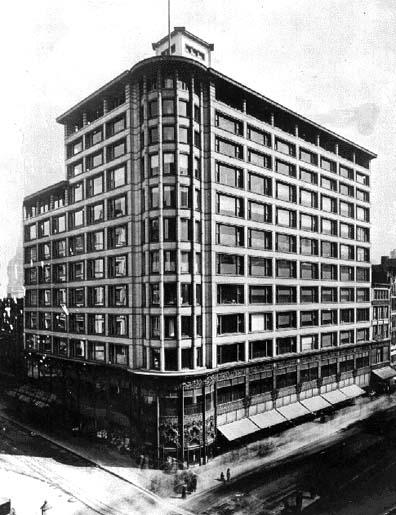Carson, Pirie, Scott and Company Building.
Carson, Pirie, Scott and Company Building. Chicago, Illinois, U.S. Louis Sullivan (architect).
1899–1903 C.E. Iron, steel, glass, and terra cotta.
- Chicago’s downtown neighborhoods
- Building with large glass windows and a rounded corner entryway covered with lavish decoration stands out.
- In contrast to its relatively plain neighbors, the pedestrian’s eye is immediately attracted to the structure’s bronze-colored ground floor and broad white façade stretching twelve stories above it. A department store.
- Sullivan’s building is an important example of early Chicago skyscraper architecture; relationship between architecture and commerce.
- Uniquely American blend of Art Nouveau decoration with a simplified monumentality.
- For Sullivan, the characteristic feature of a skyscraper was that it was tall, and so the building’s design should serve that goal by emphasizing its upward momentum.
- Instead of emphasizing identical windows meant to reflect the identical work taking place in each individual office, in the Carson Pirie Scott building, Sullivan highlighted instead the lower street-level section and entryway to draw shoppers into the store from all directions.
- The cast-iron ornament contains the same highly complicated, delicate, organic and floral motifs that had become hallmarks of Sullivan’s design aesthetic.
